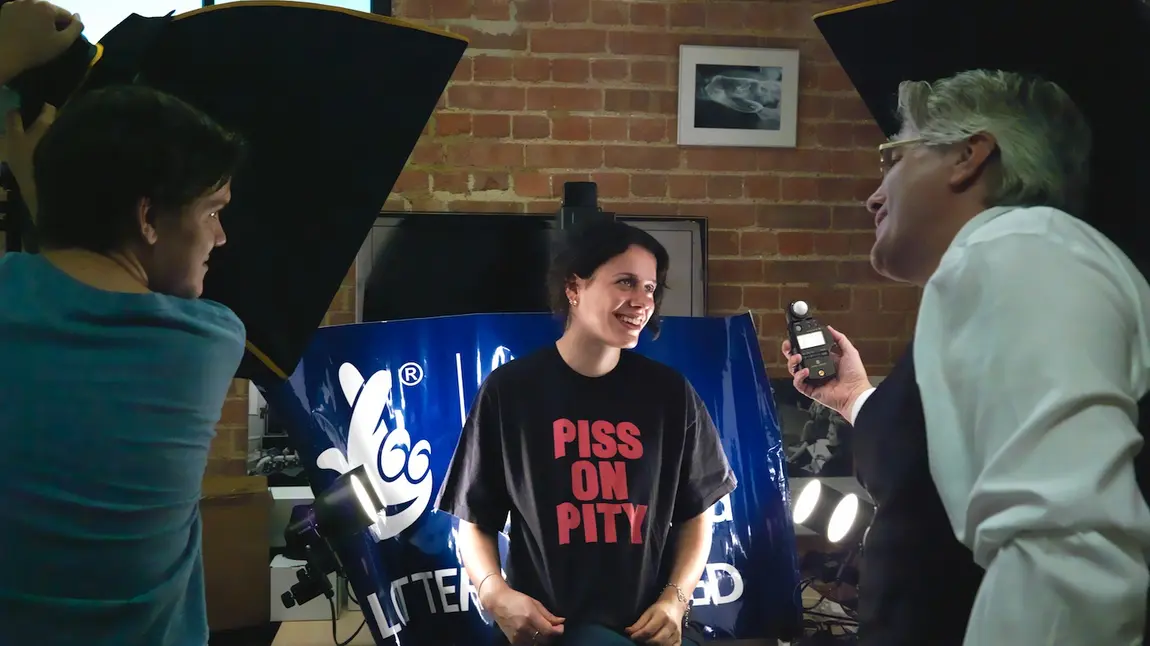140 characters and Van and Scan

NDACA Van and Scan is part of a wider project led by disabled people to create a central digital archive resource documenting the history of the Disability Arts Movement over the last 30 years.
The project team consisted of five people:
- one project director at the helm, ready to take action and drive the epic ambitions
- one photographer and her assistant producer, working until each pledge has been scanned and photographed over and over
- an experienced archivist turned surveyor, watching his careful plans come to life
- And me, the social media planner and driver of Van and Scan
A new outlet for creativity
Tweeting has helped us to shape Van and Scan into the overall NDACA narrative. Each visit provided an opportunity to capture something permanent out of the on-set bustle of artists, deposits, cameras and workers.
I felt assured our tweets would be received with enthusiasm, seeing as the tools were all there already: artists with long careers and stories to share, seeking a new outlet for their creativity through NDACA’s digital preservation.
Tanya Raabe and Nancy Willis, two of the disabled artists we visited during Van and Scan, were more than happy to have their photo taken with key pieces of their art and willing members of the NDACA crew. The idea of artists interacting with their art and NDACA tweeting the results started off as a simple gesture to show the process behind production; however, the delicate empowerment of these two disabled women, combined with our belief in the quality and longevity of the project, came together in a series of images that are undeniably special.
The power of images
Even days spent in the office copy room were of value to our Van and Scan cause.
We decided that the infamous Piss on Pity t-shirts worn by disabled activists in the 1980s should be re-worn by us: partly for the glory of trying on the most memorable slogan of the disability arts movement, mostly because we knew the tweet would work.
I sat amongst happy chaos, proud to be wearing a piece of history that went before, and proud that NDACA will allow the disability arts movement to live on in full digital array.
How could we not include Graeae’s colourful theatre posters as part of our online twitter display? Or tweet a close-up picture found at Holton Lee, one that defines Disability Arts clearly and succinctly: a culture of control, empowerment, and disabled people’s creative voices.
These are the previews that our social media audience has latched onto; thanks to re-tweets from the culture minister Ed Vaizey and Arts Council chair Peter Bazalgette, our chain of NDACA updates has travelled much further than expected, and overall the stats should exceed 100,000 impressions.
Together, these images depict Van and Scan’s development into a visual triumph. I believe each shot demands a response from the viewer; bold and vibrant, we clearly enjoyed shooting them, and as tweets they were NDACA’s first chance at public self-ownership. We succeeded, I think, in delivering a message that will only be amplified before the project goes live in 2017. The epic has already happened in the trials and achievements of the disability arts movement: it is NDACA’s honour to re-deliver it, so that the British public can finally accept disability arts into its diverse cultural landscape.
Further information
To contribute to HLF's conversations about inclusive heritage, visit our Online Community to discuss issues, and share knowledge and learning.
You might also be interested in...





